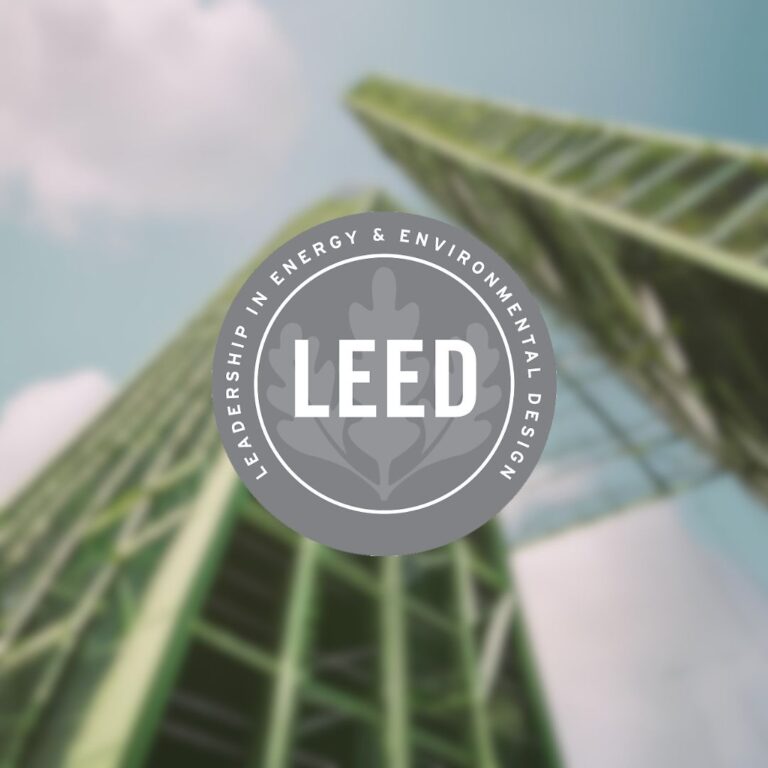
In today’s world, sustainability and environmental responsibility are more critical than ever.
The Leadership in Energy and Environmental Design (LEED) certification, developed by the U.S. Green Building Council (USGBC), stands at the forefront of green building practices. This certification offers a comprehensive framework for identifying and implementing practical and measurable green building design, construction, operations, and maintenance solutions. Here’s why LEED certification is so important and why it should be a priority for anyone involved in building and construction.
What are the Environmental Benefits of LEED Certification?
The foremost reason to pursue LEED certification is its significant environmental impact. LEED-certified buildings are designed to be more energy-efficient and to use fewer resources than conventional buildings. They often incorporate renewable energy sources, advanced energy-saving technologies, and sustainable materials. This focus on sustainability helps reduce the building’s carbon footprint and minimizes its impact on natural resources. For instance, LEED-certified buildings typically use less water and energy, leading to a reduction in greenhouse gas emissions and conservation of water resources.
Investing in LEED certification can also yield considerable economic benefits. While the initial cost of pursuing LEED certification might seem higher, the long-term savings can be substantial. LEED-certified buildings are often more energy-efficient, which translates into lower utility bills. Additionally, these buildings tend to have higher market value and can attract premium rents or sales prices. Studies have shown that LEED-certified properties can achieve higher occupancy rates and command better returns on investment compared to non-certified buildings.
The health and well-being of occupants is another crucial aspect of LEED certification. Buildings that adhere to LEED standards are designed to improve indoor environmental quality. This includes better air quality, natural lighting, and access to views, all of which contribute to a healthier and more pleasant living or working environment. Improved indoor air quality can reduce the incidence of respiratory issues and enhance overall comfort. LEED-certified buildings also often incorporate elements that promote physical activity, such as access to fitness facilities and outdoor spaces.
What is the impact of LEED on Market Demand and Reputation?
In an era where consumers and businesses are increasingly concerned about sustainability, having a LEED certification can enhance a building’s reputation and appeal. Many companies are now seeking out green buildings to align with their corporate sustainability goals and to demonstrate their commitment to environmental stewardship. LEED certification can be a powerful differentiator in a competitive market, attracting tenants, buyers, and investors who prioritize sustainability. For companies and developers, obtaining LEED certification signals a commitment to quality and forward-thinking practices.
As governments worldwide impose stricter regulations on environmental standards, LEED certification can help ensure compliance with current and future building codes. LEED-certified buildings often exceed standard requirements, which can make it easier to adapt to new regulations. Moreover, integrating sustainable practices and technologies can future-proof a building, making it more adaptable to changing environmental conditions and energy landscapes.
What is the Educational Value and Leadership of LEED?
LEED certification also serves as an educational tool, fostering greater awareness of sustainable building practices among architects, builders, and property managers. By setting a benchmark for environmental performance, LEED encourages innovation and the adoption of new technologies. It promotes leadership in sustainability, challenging the industry to continually improve and advance green building practices.
Finally, LEED certification contributes positively to the broader community. Sustainable buildings can reduce the strain on local infrastructure and resources, and they often support community goals by enhancing the local environment and promoting sustainable development. LEED-certified projects are frequently integrated into community planning efforts, ensuring that they contribute to the well-being of the surrounding area.
In conclusion, LEED certification is a crucial element in the modern approach to building and construction. It offers environmental, economic, and health benefits, supports market demand and regulatory compliance, and fosters leadership in sustainability. For anyone involved in the building industry, pursuing LEED certification is not just a choice but a responsibility towards creating a more sustainable and healthy future.

